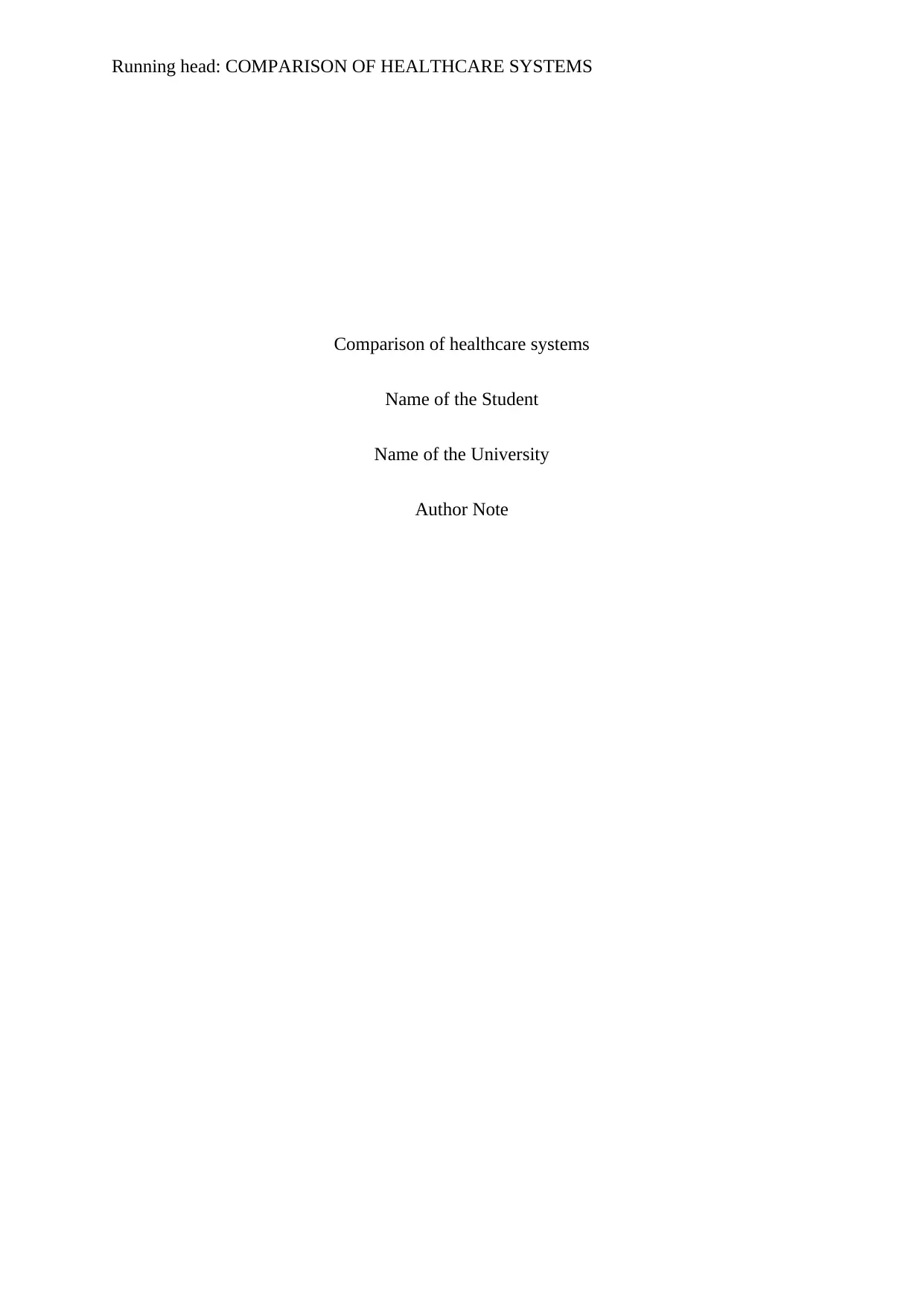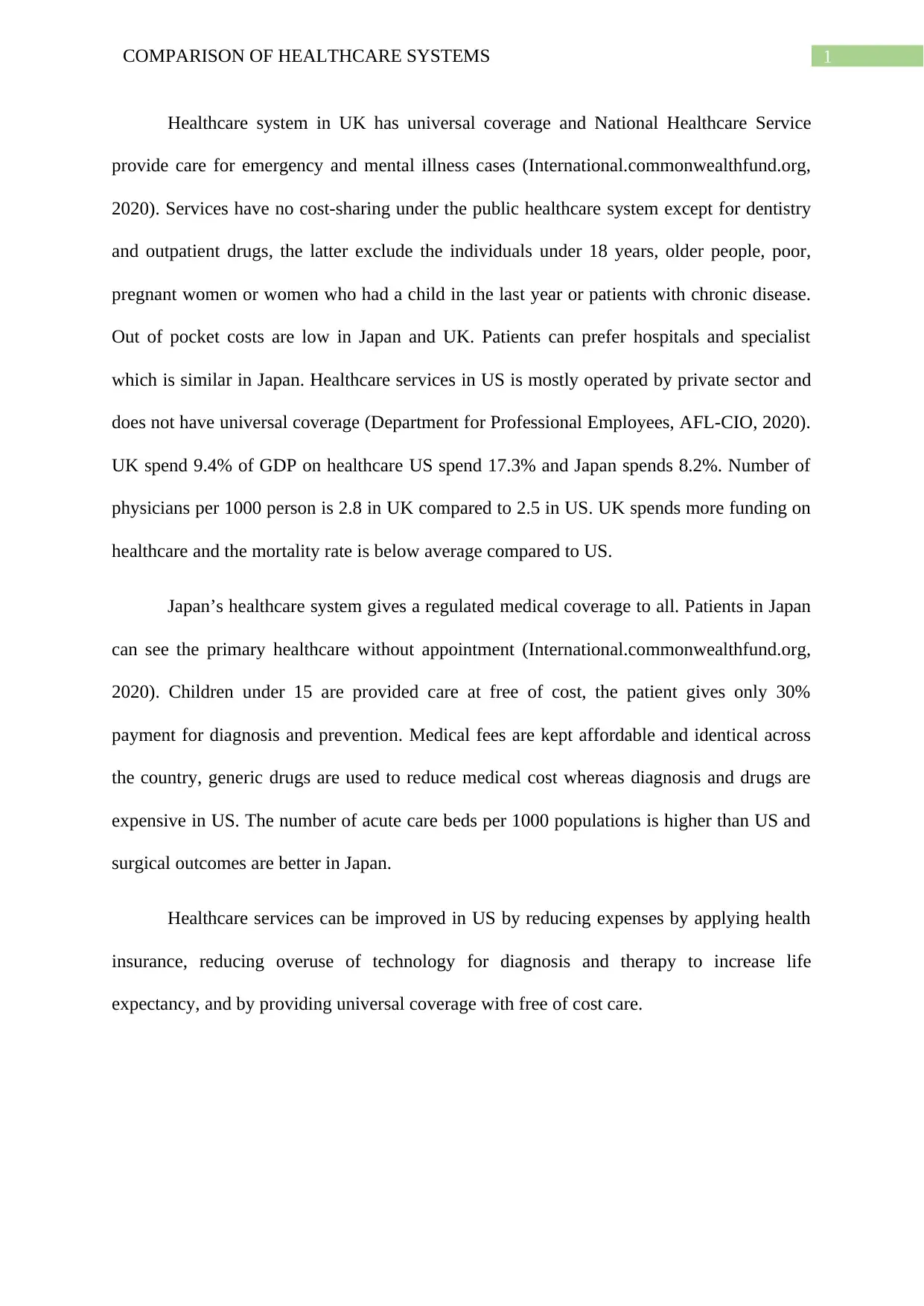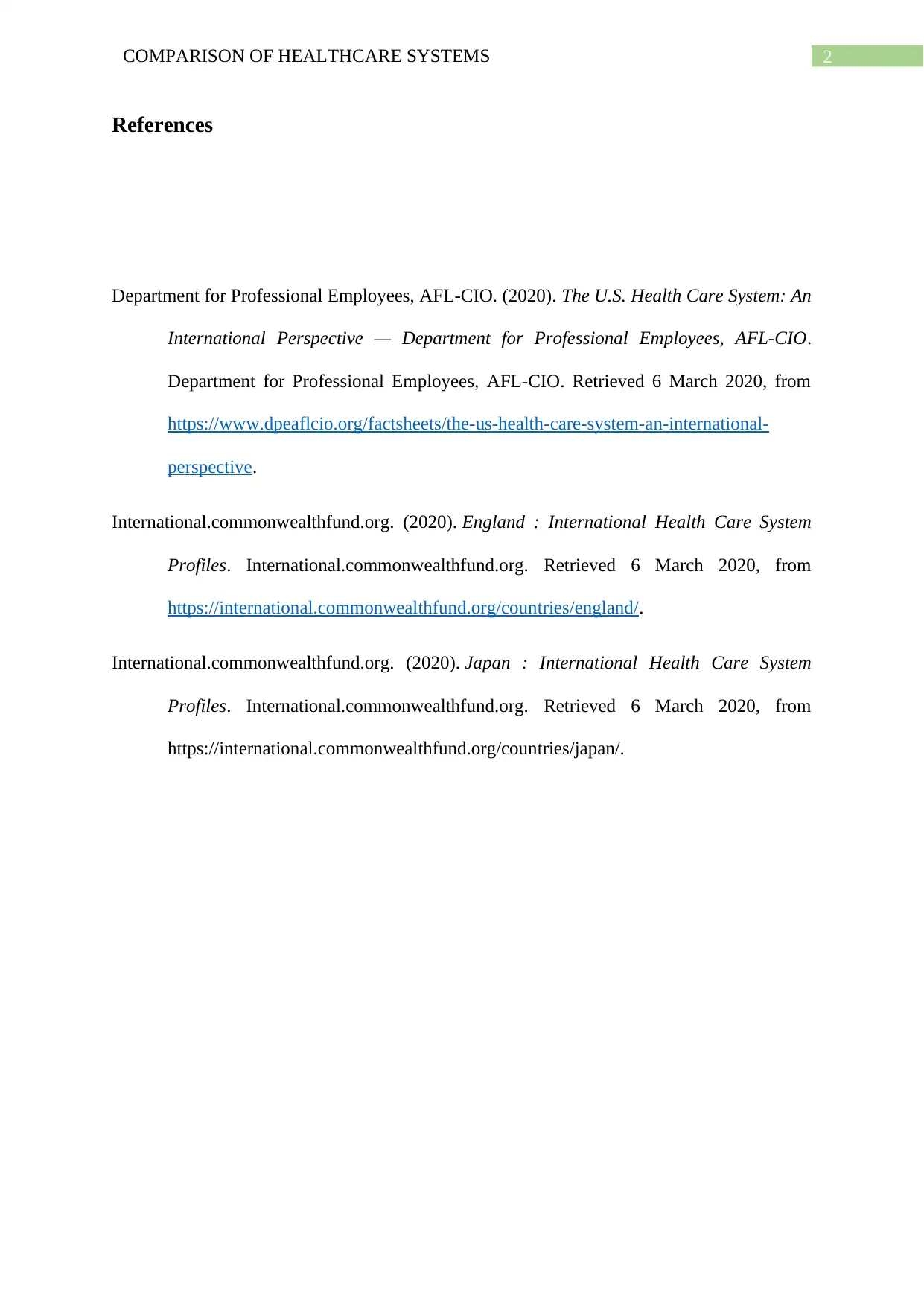Comparative Analysis of Healthcare Systems: UK, US, and Japan
VerifiedAdded on 2022/08/18
|3
|443
|13
Report
AI Summary
This report provides a comparative analysis of healthcare systems in the United Kingdom, the United States, and Japan. It examines key aspects such as universal coverage, cost-sharing, and government spending. The UK's National Health Service is contrasted with the US's predominantly private sector, highlighting differences in funding, physician availability, and mortality rates. The Japanese healthcare system, with its regulated coverage and affordable medical fees, is also analyzed. The report suggests improvements for the US system, including the implementation of health insurance, reducing overuse of technology, and providing universal coverage to enhance life expectancy. The analysis draws on data regarding expenditures, patient access, and outcomes, including mortality rates and surgical outcomes. The report concludes by emphasizing the importance of these comparative insights for understanding healthcare delivery and its impact on population health.
1 out of 3









![[object Object]](/_next/static/media/star-bottom.7253800d.svg)